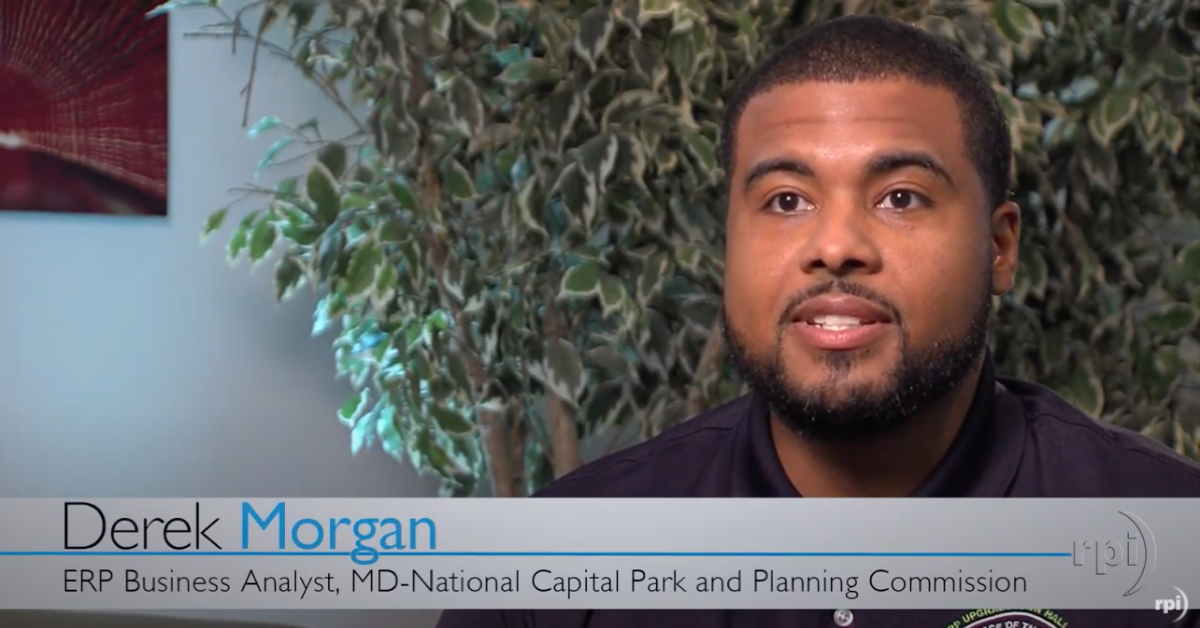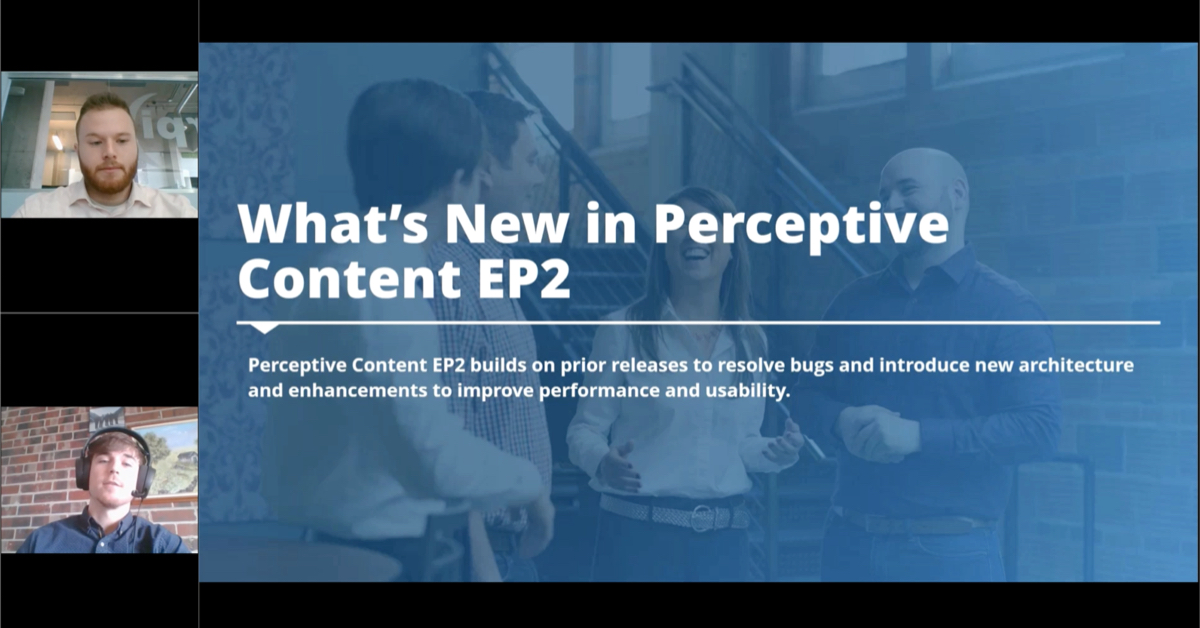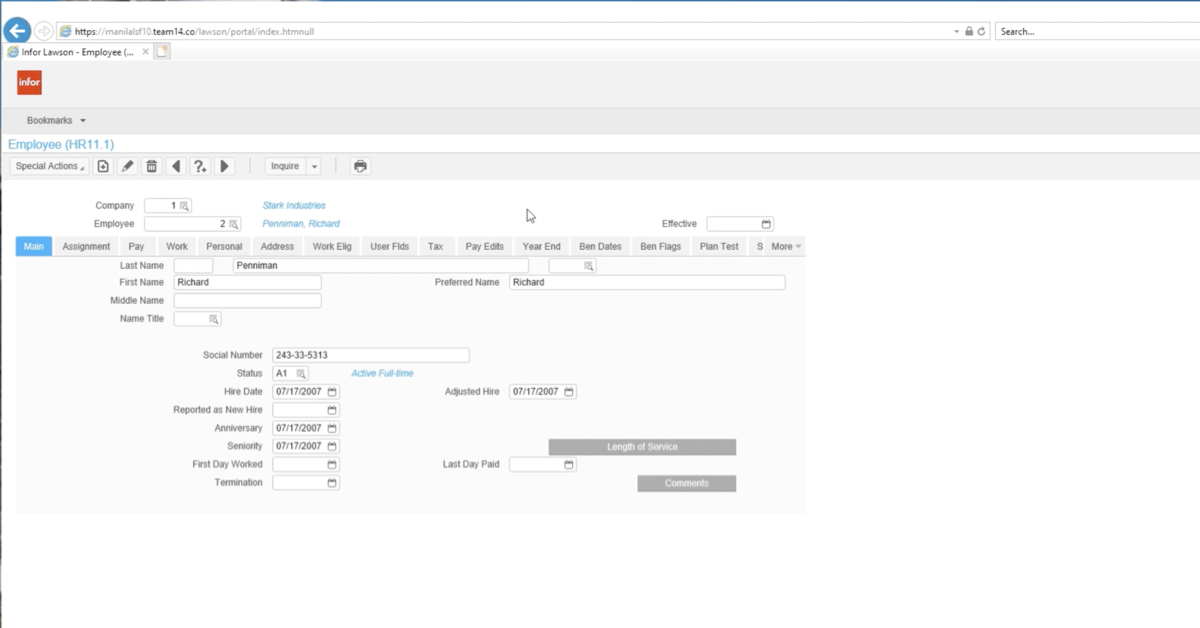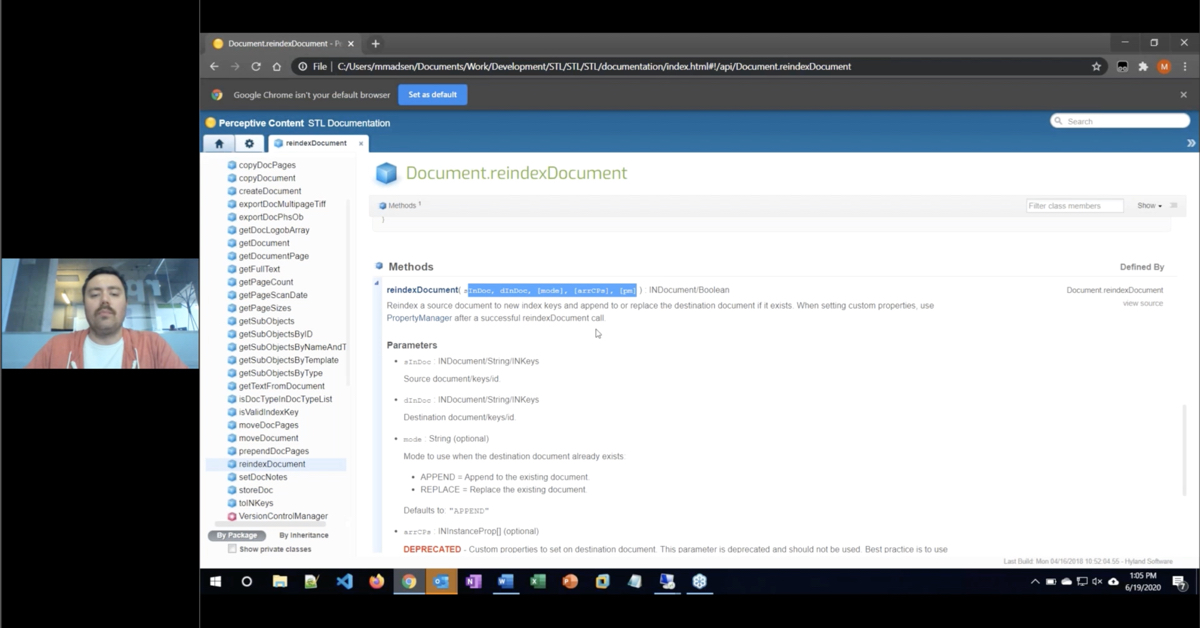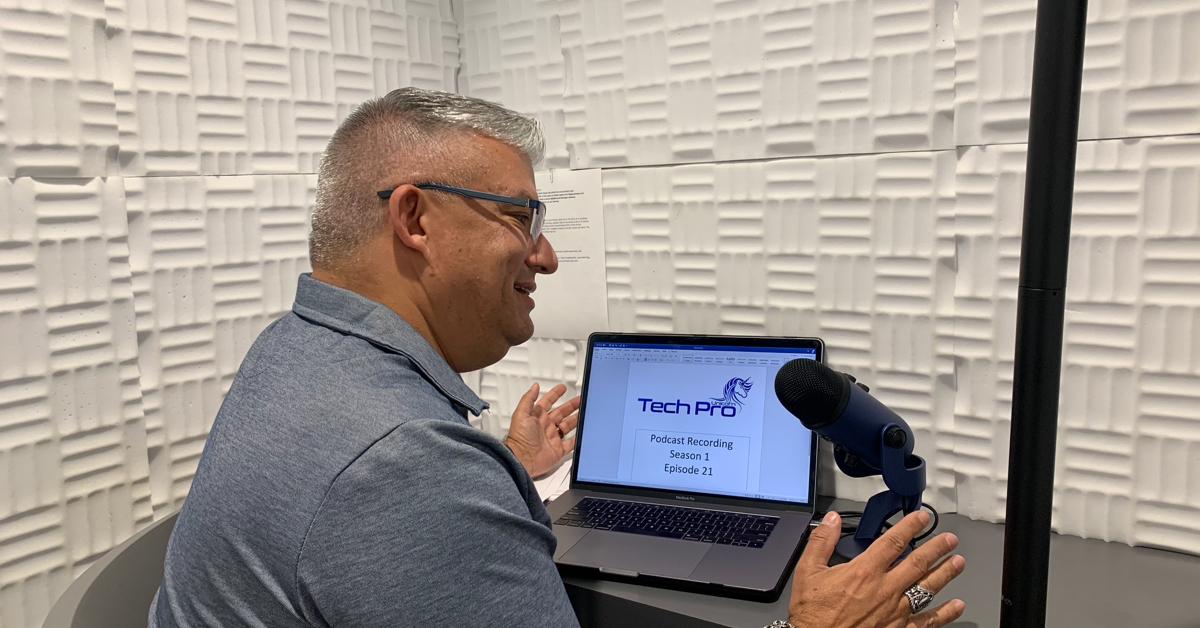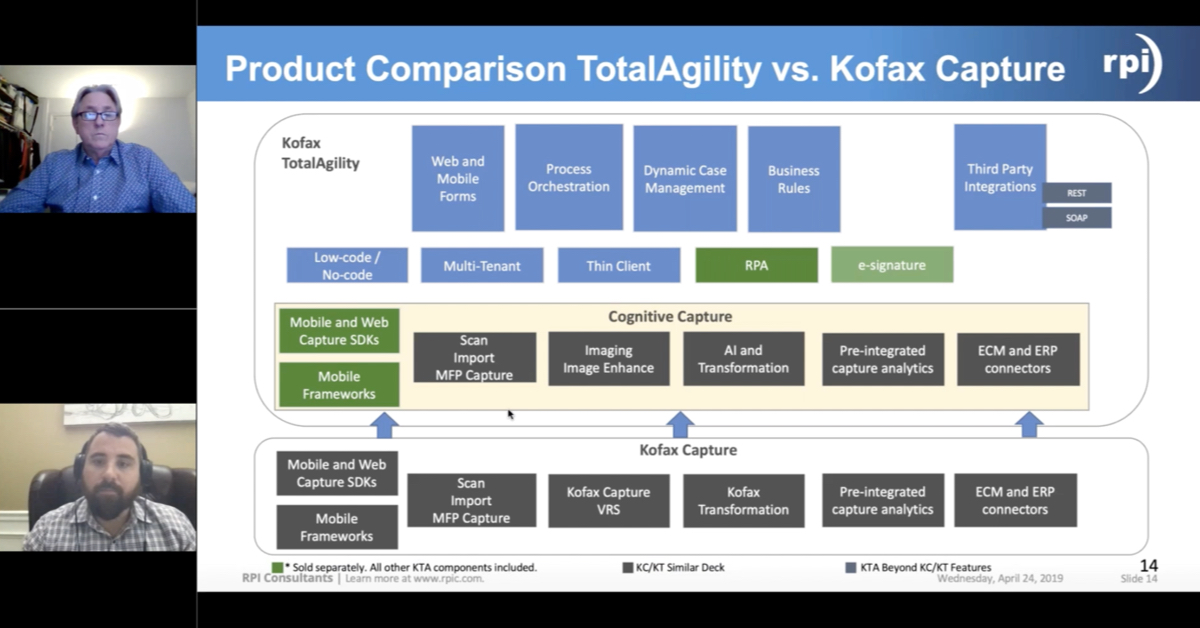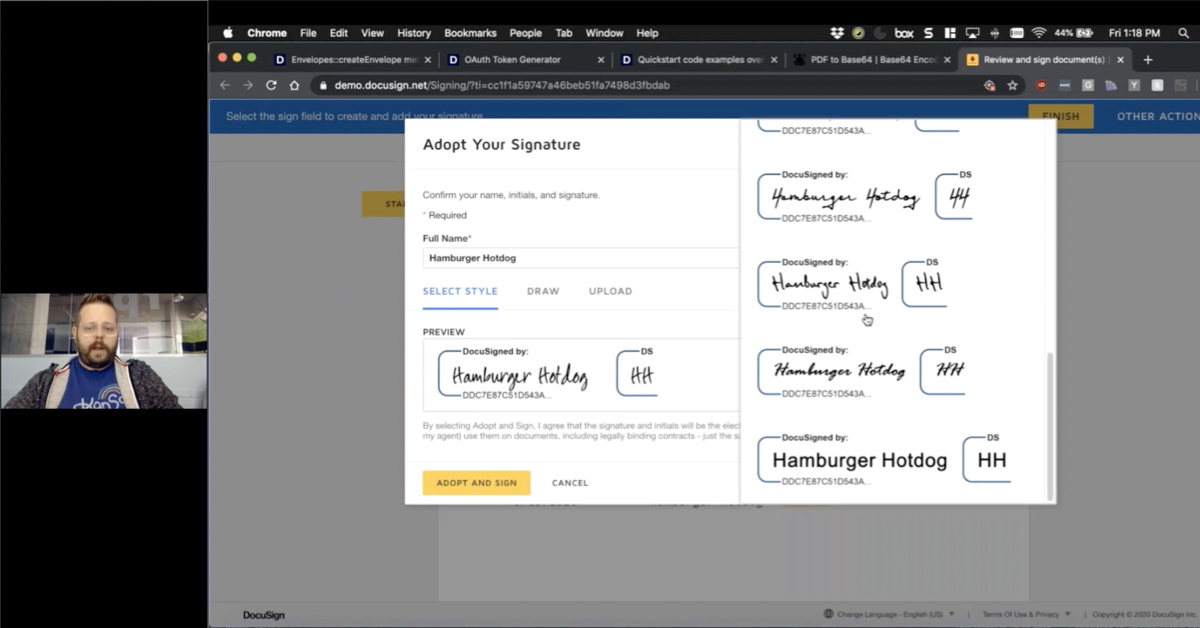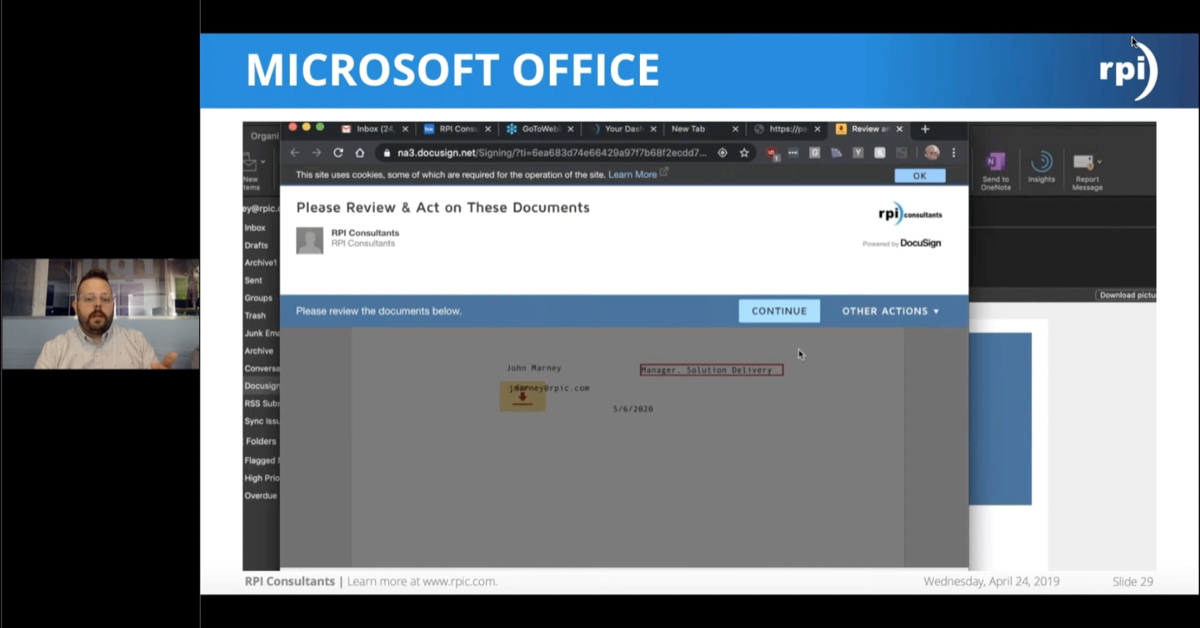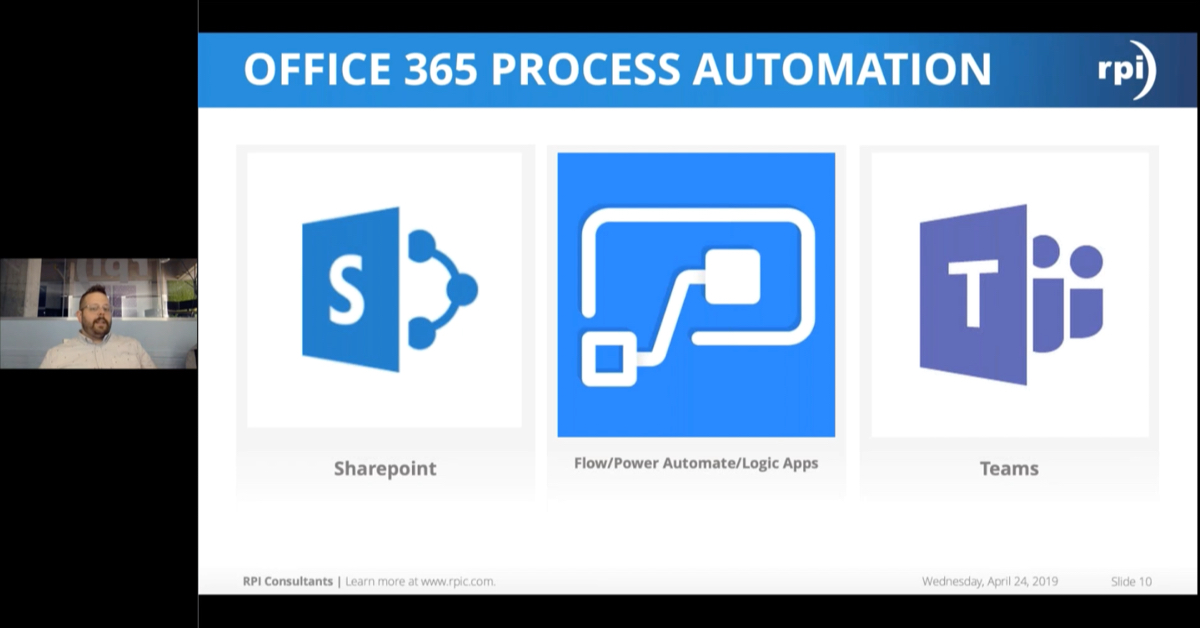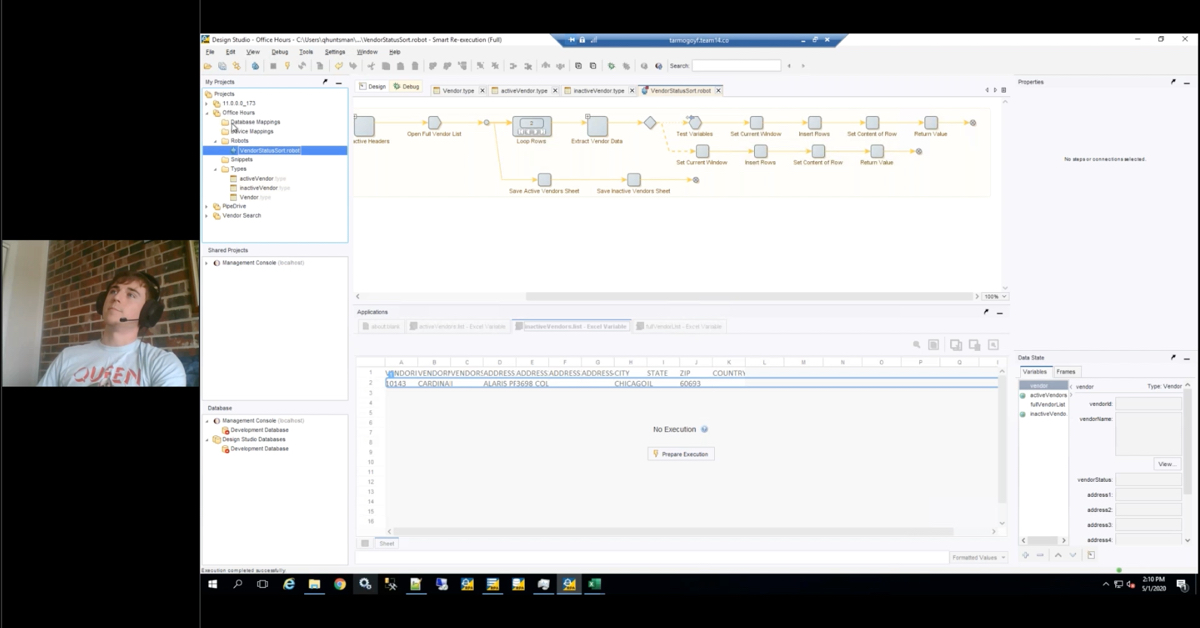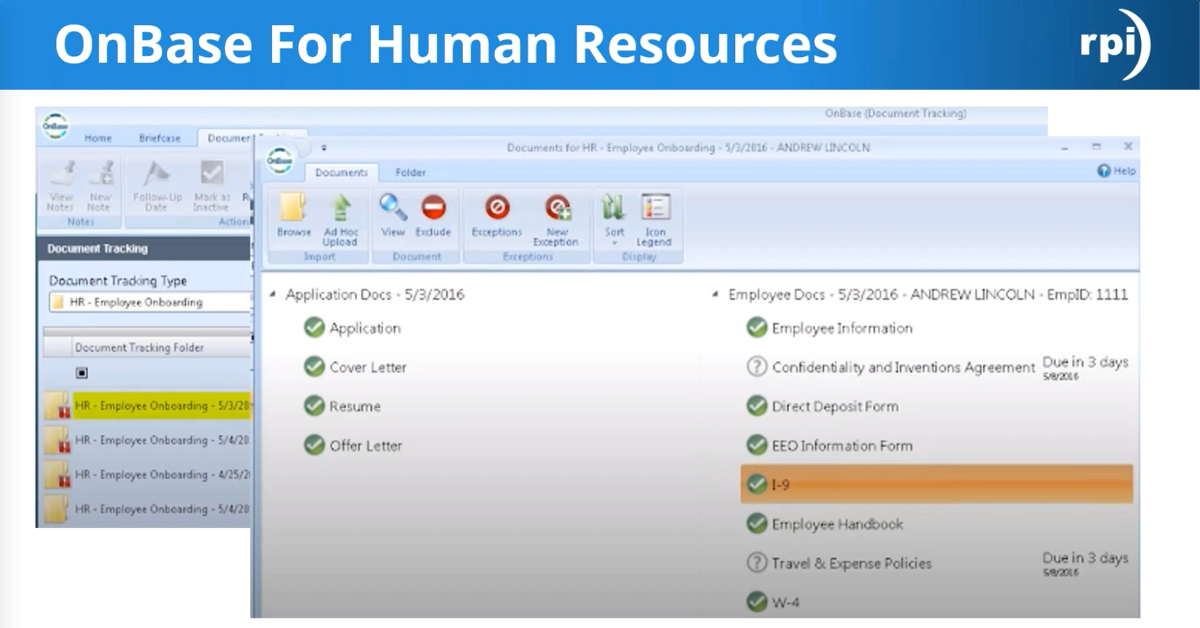Greg Pollard:
Okay, I’ll start it off. I’m a partner with RPI, probably a familiar face to some of you. I kind of help support a lot of aspects of our organization, mainly on the back end. And I’ll just be doing a quick about RPI in a little bit after we get our introductions done here. Joe.
Joe Hoover:
Thank you, Greg. I’m Joe Hoover, I’m the national director of The Lawson Practice. I have over 25 years of ERP implementation experience with Lawson. I’ve helped cities and counties implement ERP. In addition to three statewide implementations, I’ve been involved in a lot of things within the Lawson Public Sector space. And pass it on to Richard.
Richard Leigh Stout:
Hi, Richard Leigh Stout, I’m a partner with RPI. Over the past few years, I’ve taken a leadership role over our technical services practice as well as helped our customers move forward with cutting edge Infor technology, and been involved in CloudSuite implementations on the HCM and FSM side.
Bill Geddy:
Perfect. And I’m the guy that didn’t introduce himself at the beginning of the webinar. My name is Bill Geddy, I’m the VP of sales and marketing for RPI Consultants, been in the space for about 20 years. Probably several of you have seen my face before. I’m here to kind of push this along and to help make this webinars series happen over the next 10 days.
Greg Pollard:
Excellent. Thanks Bill. And yeah, I know you’re often short on words, so that’s probably why you couldn’t think of introducing yourself. So we’ll see some of that later. Oh, and we have an animation here. There is a Bobblehead.
Bill Geddy:
[Who’s that? 00:01:54] [inaudible 00:01:52] Bobblehead.
Greg Pollard:
Yeah, exactly. Some of you might’ve been lucky recipients of those at Inforum. So just quickly, this is our agenda that we’re going to run through. This is going to be fairly quick, not super in depth on too many things here, give you an overview. I won’t walk through this in detail. We’ll jump right into it. Of course, we do need to just say a little bit about RPI. Many of you, again, probably know of us, have worked with us, and we are an alliance partner of Infor’s. We are CloudSuite specialized. We’ve been on the cutting edge of many of the new technologies.
Greg Pollard:
We had a large presence at Inforum. Many of you, again, might’ve seen us there. We bring a large team because we want our customers to interact with as many people as possible, get some questions answered, get a picture of the whole team. Overall, in our practice we have over 90 consultants. We do service the full Infor Lawson market, all functional areas, technical and many other specialties as well.
Greg Pollard:
You probably have seen some of our other webinars, perhaps. We are a recognized thought leader in the space. We do kind of push the envelope and get ahead of some things to try to have that dialogue with our customers. And we presented user groups and community events and so forth. We are obviously very deeply invested in this community, in you. And you will hopefully see much more of that this week and next week with all of our webinars.
Greg Pollard:
I won’t go through these in detail. There’s a few slides here, just so you have the links in the PowerPoint document when you get them. There’s an about RPI if you haven’t seen that. And there’s, well, one customer testimonial that we have from Atlanta Public Schools, the CHRO there that was kind enough to join us last round of webinars. And then we also have Todd Stratton from Infor on product management side that has done a couple of webinars with us as well, and talks a little bit about, I believe the culture at RPI and so forth.
Greg Pollard:
So here’s the last overview slide and then we’ll get into the meat of it. RPI in the Public Sector, we’ve been servicing our Public Sector customers for quite some time, but we’re putting a new focus on it because we do see that the solution set is a great fit for expanding in the Public Sector. We are aligned with Infor’s Public Sector management team, so we are keeping up with the direction and the trends there.
Greg Pollard:
And we are advocates of the new technology and all the flexibility that that does provide for all customers, but specifically in the Public Sector. And really what we’re going to get into here next and I’ll hand it over to Joe is to provide some high level insights into the market trends from some of our surveys that we’ve done. Here you go, Joe.
Joe Hoover:
Thank you, Greg. As you can see here, we have produced surveys, we’ve issued a survey, and this was done before the Inforum 2018, we had close to 600 respondents from 300 different organizations. Within that sample size, within that respondent group, 24% of those are directly related to Public Sector. And within the Public Sector arena, our respondents for many different types of folks, which 32% were directors or above and 68% were managers or above.
Joe Hoover:
And what you’ll see here is that there’s a large amount of folks that were part of that survey. And what we’re going to do now is share with you the information related to that survey. Of the top five relevant questions that were asked, one of them was, “do you have a strategic roadmap with ERP?” And as you can here, 41% of the respondents said they did not. And that’s a really important component here to think about because as you move forward with your Infor Public Sector investment, there needs to be a strategic roadmap that helps your organization plot the next activities related to the Infor deployment. That’s something to think about there.
Joe Hoover:
On our next slide we talk about the question related to, how are you positioned to make a move to the GHR Infor CloudSuite? And as you can see here, majority of the folks have kind of made that commitment, but you have about 28% of those that surveyed that needed some help in terms of figuring out the plan to move to the Infor CloudSuite HCM. So that’s one of the important data points in our market trends, as it relates to the financial supply chain management suite. As you can see here, folks are making progress into moving in that direction. However, we have about 17% of the respondents who are still in need of help in trying to plan that out. And one of the things that we here at RPI offer is additional assistance in helping you get there.
Joe Hoover:
The next slide I want to present is, moving to the entire Infor CloudSuite application. That’s a FSM, HCM, and version 11. As you can see here, there is 27% of respondents who have not thought about that quite yet. And that, again, plays into the strategic roadmap. We feel it’s very important that the Public Sector community, the Public Sector organizations get better prepared in an overall strategic roadmap and helping themselves, and move to the latest features and capabilities of the product. And on our final question here, what Infor Public Sector is thinking about the ERP cloud. As you can see here, there’s a majority of the respondents who haven’t considered moving to the cloud yet. And the cloud is a very important aspect of the evolution of the Infor product, and we have Richard here that will be talking more about that shortly. And with that, I’m going to turn it over to Richard.
Richard Leigh Stout:
Thanks Joe.
Bill Geddy:
I just throw out a couple comments about the survey and one is, the survey was done by a diversity of people, leaders and users, doers. So it’s not just lopsided on one side. Good representation across the Infor marketplace. Another is, I think one of the trends in the comments that I saw in the survey were that a lot of people just didn’t have the information they needed to move forward. And so that is kind of the Genesis of why we do these webinar series.
Bill Geddy:
And then lastly is, there’s a lot of things on everybody’s plate. They’re trying to figure out how to fit it all into a puzzle to make it work. And again, that’s a process that needs to happen. I think my closing comment on the survey is, if you’re not there yet, if you haven’t considered the cloud, or if you’re not ready to move to virtual life, you’re not alone. There’s a lot more people just like you out there. There’s a community of effort to help you get there and we’re there to help you touch that community.
Richard Leigh Stout:
Right. Over the next couple of years we’ll see Infor’s mainstream Public Sector offering transition from Lawson to CloudSuite Public Sector. And that’s really a once in a generation opportunity to rethink some of the core structural decisions that were made when Lawson was implemented, and build out a software platform for the next 10 or 20 years. We’re at a critical juncture. And to help navigate that change, RPI Consultants is investing in our community, offering a lot of information. We’ll talk about a couple of upcoming webinars on Thursday, where we’re going to dive in to some CloudSuite specific topics.
Richard Leigh Stout:
And we’re meeting with our customers now and helping educate them on what’s available in CloudSuite, how it could be a good fit for their organizations, and what’s the path to getting there. So we’re happy to help you build out your application roadmap. It’s important to be the agent of change and not just let change happen to you. Because one thing we can say for sure is staying on Lawson indefinitely is not what we consider a plan or a roadmap for the future.
Richard Leigh Stout:
So one of the first steps in moving forward and figuring out where to go next as Lawson 10 reaches maturity… And we look forward to the next systems that we can put in place. One of the next steps is to make a business case for Infor CloudSuite and see if CloudSuite Public Sector is the best fit, not just potentially for upgrading from Lawson, but maybe even replacing point solutions-
Bill Geddy:
Yeah.
Richard Leigh Stout:
… Consolidating functionality. CloudSuite offers a lot more functionality than the previous generation of the solution, and could potentially reduce the overall number of applications in your portfolio. Moving to, the cloud can offer reduction [inaudible 00:12:13] of ownership of the system. Our platform of the future improves visibility of data, which we noted during our survey, was a key driver for our clients. And we’re talking not only operational and regulatory reporting, but strategic forward looking projections.
Richard Leigh Stout:
It’s a process driven solution, which means that the application is crafted around helping our users complete business processes rather than being a passive database that leaves processes up to the users, and the businesses to understand and complete on their own. And it’s an application that’s available where we want it, on mobile devices when we need it. It’s intuitive and it works well for the modern workforce.
Bill Geddy:
Greg said I’ve never shared a word, so I’m going to live up to that right now. But I’ll tell you that one of the intangible things in the business case that I think is important for people to understand is you’re not starting from scratch. You’ve built on a 10, 15, 20 year history, sometimes 30 years history with your current software vendor, continuing to improve it, understand it, build relationships.
Bill Geddy:
So like going out to a new software company and having to say, “Well, who’s the person in charge? Who’s this person here?” There’s a comfort zone to it. That doesn’t mean there’s not a lot of change, but there’s an opportunity to take advantage of what you’ve invested your time and energy over your career in your life and take it to the next level, maybe for the next generation, for the next series of employees. So I think that’s really important to note.
Richard Leigh Stout:
I totally agree, Bill. Because moving to CloudSuite could be characterized as an upgrade or it could be characterized as a migration, but it’s clearly an easier path than implementing a whole new system.
Bill Geddy:
Exactly.
Richard Leigh Stout:
Yep.
Bill Geddy:
Well said.
Richard Leigh Stout:
So we’ll talk more about making a business case for CloudSuite on Thursday. I’m partnering with Keith Wayland to dive into that, and that will be at 1:00 Eastern. Let’s talk a bit about Cloud. Joe and I were talking about this earlier. It’s a big consideration, particularly with Public Sector clients to move to the cloud or stay on-prem. There’s not just the idea of another organization hosting your data, but it’s moving to a multi-tenant architecture.
Richard Leigh Stout:
And there are a lot of changes there with how as a client you’ve managed your applications, particularly when it comes to system updates. And there are a lot of different factors that could go into a value analysis of cloud versus on-prem. There’s a licensing difference between Perpetual and SaaS licensing. There’s the responsibility of hosting that infrastructure. And along with that, maintaining the security of the overall system. And our responsibility for the uptime. And then of course, how updates get applied in a more rapid release fashion with a multi-tenant architecture versus when you’re on prem you’d would probably stick with a more traditional large upgrade cycle.
Joe Hoover:
And Richard, to your point, at RPI, we have two clients that are a half a mile apart from each other-
Bill Geddy:
Yeah, half a mile apart.
Joe Hoover:
… One a city, one a county, and one of them is on-premise, and the other one has decided to go to the cloud.
Bill Geddy:
Both CloudSuite version 11 HCM-
Joe Hoover:
Both clouds and 11. So they’re-
Bill Geddy:
Kind of interesting.
Joe Hoover:
Yeah. So there really is not a definitive answer right now. It depends on the organization’s direction and capabilities.
Bill Geddy:
Yeah.
Richard Leigh Stout:
Yeah, absolutely. So again, Mr. Wayland and I will be diving into that Thursday at 3:00 Eastern, and are always happy to have one-on-one follow-up conversations if anyone is interested in continuing this conversation. So here we’ve got an example or a high-level framework of where we see the market moving, and where we see the majority of our customers being in the life cycle at this point. So right now it’s very important to understand more about CloudSuite.
Richard Leigh Stout:
What we found is that while there’s been a lot of knowledge and information that’s penetrated within IT, organizations, our business leaders, and our clients are probably less up-to-date on really what CloudSuite can offer to them. So we think it’s really important to socialize that knowledge and for our IT leaders to be our change agents and help socialize that information.
Richard Leigh Stout:
With the recent [inaudible 00:17:49] in Lawson Upgrades over the past couple of years, there was a big upgrade cycle that just ended with moving to Lawson 10. This has presented an opportunity for our clients to stabilize and optimize the systems they have in place. And there’s a lot of value to looking at that now as a step to prepare for moving forward to CloudSuite. It’s not wasted effort to go and look at your business processes, and dive into things like customizations and start cataloging that and making sense of how these different things will move forward.
Greg Pollard:
And just to clarify, I believe I know and maybe many people do, by CloudSuite, you’re not just talking about knowing your options as far as moving to the cloud. You’re talking about the product CloudSuite, right?
Richard Leigh Stout:
Yeah, absolutely-
Greg Pollard:
I’m sorry if that’s obvious for most of you, but I just wanted clarify there.
Bill Geddy:
Yeah, it’s a branding thing and the brand name is CloudSuite-
Greg Pollard:
Yes. Okay. The new version of the products.
Bill Geddy:
And it can be deployed on-prem it can be deployed in the cloud. Probably the optimal solution is the cloud because you’re going to get the latest and greatest all the time, but there are on-prem options, which a lot of vendors don’t offer. So you just have to be prepared to support it.
Richard Leigh Stout:
Yeah, absolutely. And then looking forward over the next couple of years we see a lot of interest in phased rollouts. With Lawson, we have three suites altogether, finance and supply, and HR, payroll. With version 11, HR and payroll switch to their own what you might consider a suite versus finance and supply. And with the HR side having a little bit more market maturity, we see quicker adoption of CloudSuite HCM, or global HR at this point. And then a lot of our clients are planning to quickly follow that with an implementation of CloudSuite Financials and really capitalize on the analytics offerings there to roll out a more powerful analytics solution across the whole solution ethic inclusion of CloudSuite Financials implementation.
Bill Geddy:
Yep. So I add one comment I would make about that, and that is we’re not big advocates of The Big Bang implementation. We can do it. We absolutely have done it in the past. We see most clients struggle with it, I think. A more phased approach, one success at a time, building on that success one another really gives an organization the confidence. It’s kind of like when you talk about business process optimization now before you start the upgrade. Get those wins, get those departments really enjoying and liking the application, getting the functionality that they need so that they’re change agents for you in the future, as you begin to explore the new application. So obviously we could do a Big Bang if you can handle it, but I think most organizations like a more phased approach.
Bill Geddy:
So I’m going to talk a little bit about the tools that we have available well to you that you could take advantage of, they’re absolutely free. They’re on the web. They’re out there now. I was actually astounded when my marketing team told me the other day that we’re over 250 webinars recorded up on YouTube. I think we’ve taken some down and cleaned them up a little bit so the number may fluctuate a lot. But 250 webinars about any topic, that’s amazing to me. I think it shows a tremendous commitment to the Infor, Lawson market. They’re available out there on YouTube. Some organizations have trouble with YouTube, so we also I’m out on Vimeo. We just need to provide you those links, or you can see them on Digital Concourse, WorkOutLoud. They’re also on our website, so they’re in a couple of different platforms.
Bill Geddy:
Just in June, we talked about Skye Duckett, CHRO of Atlanta Public Schools, she came in and did a great webinar with Richard. In June, we did 31 webinars over the course of five days. During this next nine, 10 day period we’re going to do 34, possibly 36. We’ve got a couple additional webinars around imaging content, content management with our imaging team. So those are special. They’re on a Wednesday, by the way. And again, highlight the special guest. Now this is a tremendous commitment by Infor to send their head of HCM product management to Baltimore, Maryland to sit with us live and do two webinars about topics that everybody’s talking about. And that’s the next evolution of HCM and where payroll is headed, Next Gen Payroll. So I’m really excited about having Amy in our office next week.
Bill Geddy:
I did a quick study for the Public Sector group recently and we gave some statistics. Since 2016, we’ve had 15,000 participants in our webinars. That to me is outstanding. That doesn’t even include the viewers. I’m just talking about the people that attended webinars. So we have a bunch of different topics. Sometimes we’ll repeat a topic because there’s an update that needs to be had or maybe we couldn’t enough. So you will see some several that are similar in title, but they have different content. So we update them regularly, particularly the very popular topics. Some of the webinars are 15 minutes, some of them are 30, some of them are a full hour-
Richard Leigh Stout:
And some of them have Bill in them, so they [inaudible 00:24:08].
Bill Geddy:
Several of our… We have me in them and they’ve run 75 or 90 minutes. So yeah, thanks Richard. And then there’s playlists out there. We can build playlists. Good information. There’s something for every role is my point.
Joe Hoover:
Bill, before you move on, the 250 webinars, some of them cover back to version 10, right? We talked earlier about optimizing your current systems and functionality.
Bill Geddy:
Oh, absolutely.
Joe Hoover:
You can go back to that library of webinars and pick out those areas that you may want to add functionality to or improve your current system. So that’s something I wanted to point out.
Richard Leigh Stout:
Yes, we’ve been doing this since Lawson was version nine and my hairline was down here.
Bill Geddy:
Yeah. All right. So this is a very complicated schedule. And this is just to demonstrate how many webinars we’re doing over the next 10 days. We’ve highlighted five, I’ve mentioned them before. Top 11, things about version 11, that’s at 11:00 on Thursday. 1:00 on Thursday is the business case for version 11 CloudSuite. 3:00 This Thursday is to cloud or not cloud, that’s a whole discussion about the cloud that Richard and Keith…
Bill Geddy:
Those three webinars are going to be done by Keith Wayland, our managing partner and Richard Stout, our technology partner. So very strong commitment there. And then the other two I highlight, I just wanted to mention again where the two next Thursday, which are at 1:00 PM and 3:00 PM on Thursday. And those are about the HCM evolution and the payroll progress. I think you’ll see some great information published there, and welcome you to attend.
Bill Geddy:
All right. I want to talk a little bit about something new we’re going to do specific to Public Sector. So this is actually one of our first webinars that we’ve done that is vertical-specific, and vertical-specific to the Public Sector market. With the onboarding of Joe joining the organization, we wanted to put some tools in your hands. We’ve got these 250 webinars that show your doers what they need to do, and it’s regardless of vertical, really. But then we’re going to put some webinars together that talk about vertical-specific topics to the Public Sector.
Bill Geddy:
So this is a series, we’re going to talk about CloudSuite, we’re going to talk about the cloud. We’re going to do a session on K-12. We’re going to do a session on the local government, and all sorts of things. We’re going to talk about security, technology in the Cloud financials and public segregation of Public Sector and so on. So this will be published in the year coming, in the near term. You can look for that to be run between January and June, which is our next webinars series for the summer. So here’s some closing thoughts. We’re getting ready to wrap this up. We got two slides left. Joe.
Joe Hoover:
Sure. On the closing thoughts, what we strongly recommend, and you’ve kind of seen it through the whole webinar here, is that we offer the ability to get educated. To get educated on what the cloud represents, what CloudSuite represents, things that you can do to get ready to move forward with CloudSuite application. And what we’d like to also do is provide you the ability through these webinars and other items to have the opportunity to get ready from that perspective. And finally, if you don’t have a roadmap, we strongly recommend you get one. We can help you develop the roadmap. And moving forward with Lawson Infor needs to be part of that roadmap. And with that, I want to pass it back to Bill on the upcoming webinars.
Bill Geddy:
Absolutely. Couple things I would mention that are out there in the future, Infor is hosting the winter showcase in January the 29th through the 31st. It is a great opportunity to see all their products. They do it in Saint Paul, it’s a little chilly. It’s sponsored by the partner community. There’s no charge to it, got to get travel and hotel and things like that. That enrollment is still available. It’s out on the Infor Communities or on WorkOutLoud, I encourage you to attend if you can. Plan to watch our webinars series we’re going to do with Public Sector in this webinar series we’re doing over the next week.
Bill Geddy:
If you don’t have a relationship with you Infor Ae you need to build one because these changes is critical. Your Ae is a critical piece of the puzzle, and they can do wonders for you. But if you don’t know who it is, you’re not going to be able to leverage the best talents you can. If you don’t know who that is let us know, we’ll get you hooked up. And get involved in the Infor Community. I would tell you get on the systems, get in the Infor Communities, get on WorkOutLoud. The community is only as good as we make it, each of us. We try to contribute our part to it-












